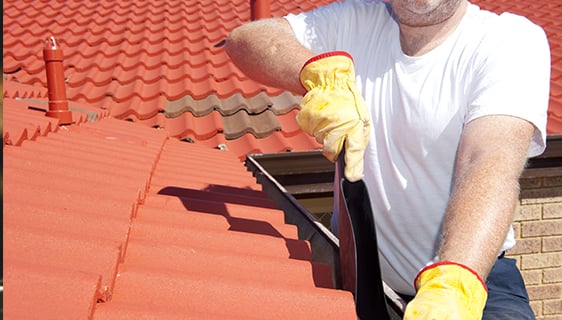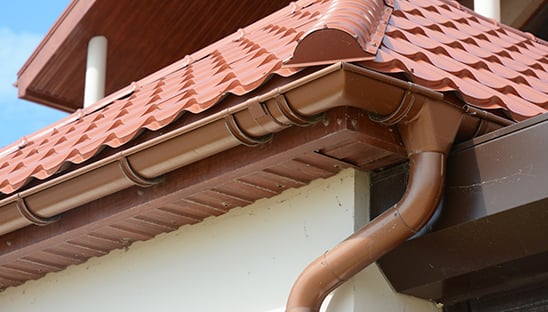
Residential
Gutters
Your gutters demand year-round attention. Over the course of the seasons, gutters withstand freezing ice, the weight of snow, heavy downpours, extreme heat, and clogging debris (like sticks and leaves). Are your gutters in good shape?
We are experts in the replacement of old or damaged gutters and downspouts
THE BASICS
Gutters and downspouts perform two main functions. First, they help capture and direct the roof run-off water away from the house. Second, they help protect the exterior surface and perimeter grading of the home from water damage that can result from the roof run-off water running down the side of the house or eroding the soil around the home.
It is estimated that a one-inch rain fall on a typical 2000 square foot roof can produce up to 2,500 gallons of water. Not all homes need gutters and downspouts, depending on the design of the house and local weather conditions. But if the home experiences problems resulting from surface water, gutters and downspouts should definitely be a first line of defense.

Gutters
Gutters come in different shapes and sizes and should be selected based on particular conditions of the home, including aesthetics, slope and size of the roof, and local weather conditions. The standard gutter is made of aluminum or galvanized steel and is attached to the fascia board at the eaves (roof line of the home). Other types include plastic and copper gutters, wooden gutters on older homes, and integral (to the roof) or built-in gutters on some newer homes. The standard gutter is 4 to 6 inches wide. The size of the gutter should match the anticipated amount and volume run-off for the roof.
Downspouts
Downspouts, sometimes called "leaders," are used to direct the water leaving the gutters down to the ground or drainage system in a controlled fashion. Downspouts are secured to the side of the house and are often constructed of the same material as the gutter. Where the downspout discharges the water is important when controlling surface water around the home. Extensions, additional piping that extends laterally from the bottom of the downspout, are used to direct the roof run-off away from the foundation. Splash guards, or blocks, are used to prevent soil erosion if the downspout discharges onto the ground.

